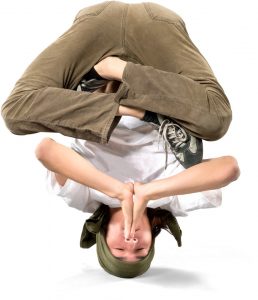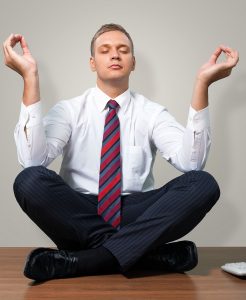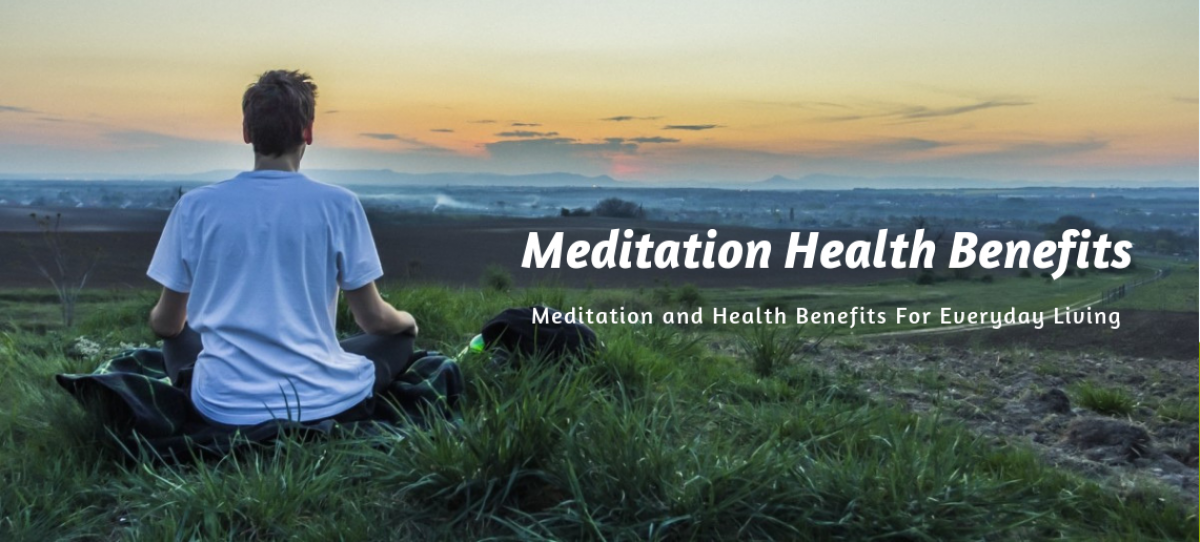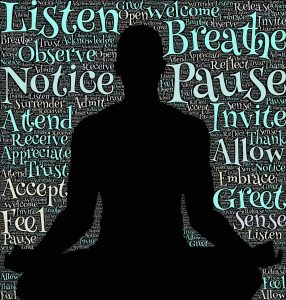Meditation can be defined as an experience of having both your mind and body in a relaxed and focused state. People who meditate regularly have reported being more focused, a higher level of concentration, feeling more aware and enjoying a more positive view of life.
When you think about meditation you might recall pictures you’ve seen of mystics, monks or other spiritual guides.  The good news is you don’t have to fall into one of these groups to reap the benefits. A great perk is you will not need a church, temple or similar place to practice this art. Any room in your home will do the trick.
The good news is you don’t have to fall into one of these groups to reap the benefits. A great perk is you will not need a church, temple or similar place to practice this art. Any room in your home will do the trick.
There are central elements that are true to the several distinct forms of meditation. The strongest one of these elements is developing the aptitude to discard intruding, contrary and random thoughts and daydreams in favor of calming the mind and giving it a rooted sense of focus. The result frees the mind of clutter and prepares it for heightened levels of activity.
We all carry negative thoughts such as noisy neighbors, co-workers who think they know it all, that unpaid parking ticket and heaps of spam clogging up your inbox. All this negativity starts to poison our minds. The goal is to close these thoughts down so we can eliminate them from our consciousness allowing for more meaningful ideas to infiltrate and take hold, a sort of cleansing of the mind.
Some dedicated practitioners go so far as to remove all sensory details including sight, sound, and touch in order to disengage themselves from the turbulence of their busy worlds. Ironically, the silence may seem deafening but by moving forward with this activity there is a high likelihood that they will become more mindful of all that surrounds them.
 If you have ever watched videos of people in contorted meditating positions that look more like advanced yoga poses, do not worry. The idea is to be in a relaxed position allowing you to concentrate. It may mean sitting Indian style, lying down, standing or even walking.
If you have ever watched videos of people in contorted meditating positions that look more like advanced yoga poses, do not worry. The idea is to be in a relaxed position allowing you to concentrate. It may mean sitting Indian style, lying down, standing or even walking.
Always ensure that you can relax in your chosen position. Whether you are standing or sitting your back should be straight but neither tight nor tense. Remember, relaxing in the key here. If you choose any other position the rule is no dozing off or slouching. Being comfortable in loose-fitting clothes will prevent you from tensing up. A tight pair of pants or belt might cause you to focus more on that squeezed in feeling than on your breathing.
The area you choose to meditate in should provide a soothing vibe. It could be a bedroom, den or living room. A back deck, if available, might be the perfect spot. Pick up an exercise mat if you want to try some of those contortionist types of poses you sometimes see. Bottom line, get your “quiet place” set up so that it’s an inviting place to meditate.
The sounds of silence are a big deal when meditating. Quiet brings calm and relaxation. Don’t get your space all set up only to realize that the kids are forever going back and forth just outside the room. Scents such as lavender, eucalyptus, and lemon help soothe the mind and release tension. It might be a good idea to get your hands on some scented candles or diffusers to create the ambiance you are looking for.
Have you ever seen someone sitting cross-legged saying “Om” over and over again? These sounds are a mantra for some. A mantra should be a  sound or word that can be repeated in order to help the mind focus. This practice can lead to a spiritual experience but it is not a required technique. Some people, however, have reported that focusing on any sort of repeated action like a mantra or rhythmic breathing has helped them achieve a higher level of awareness.
sound or word that can be repeated in order to help the mind focus. This practice can lead to a spiritual experience but it is not a required technique. Some people, however, have reported that focusing on any sort of repeated action like a mantra or rhythmic breathing has helped them achieve a higher level of awareness.
Above all else, the goal here is to focus. Try staring at a particular point or object in your chosen spot. Or, in your mind, concentrate on one particular thought. Let me use two of my personal examples. I have a loud ticking wall clock so I focus on its measured sound to meditate. If I have trouble falling asleep I take a few deep breaths and repeat the word BLANK to help calm my mind. I have found success with both these methods.
Another suggestion might be to silently zero in on each part of your body as you silently name them. As you reflect on that body part release any tension you feel there. Focus your attention on letting go of the stress.
Meditation CDs can be very helpful especially when you are just getting started. Positive results have been reported in developing brain waves to a point where the listener can achieve deep meditation.
Meditating is a pretty simple, risk-free experience. The list of benefits is so worth the effort. The positive physiological effects associated with this ancient art have been studied and reported on for centuries. Modern day medicine has embraced meditation encouraging their patients to give it a try in order to relieve pain and other symptoms associated with their illnesses. It’s never too late to begin. Find your quiet place, close your eyes and focus on your breathing. It won’t take long before you feel the results so get cracking!

 Eastern doctrine proposes meditation as a way of exploring the eternal. This involves opening up your mind to the point where you have found your place in the cosmos. The idea is that emotions such as love, grief, and extreme happiness can lessen over time but the universe is constant. Students who embrace this philosophy may, in the end, find themselves closely attuned with the very purpose of life.
Eastern doctrine proposes meditation as a way of exploring the eternal. This involves opening up your mind to the point where you have found your place in the cosmos. The idea is that emotions such as love, grief, and extreme happiness can lessen over time but the universe is constant. Students who embrace this philosophy may, in the end, find themselves closely attuned with the very purpose of life. It doesn’t matter the spot as long as it’s a quiet place you feel comfortable in where you can lie down on a bed or the floor, sit or stand. The process is simple. Many online programs and tutorials walk beginners through the basics, help with correct posture and advise you on the best way to set up your meditation space to maximize your transformational experience. It’s time to get started today.
It doesn’t matter the spot as long as it’s a quiet place you feel comfortable in where you can lie down on a bed or the floor, sit or stand. The process is simple. Many online programs and tutorials walk beginners through the basics, help with correct posture and advise you on the best way to set up your meditation space to maximize your transformational experience. It’s time to get started today.
